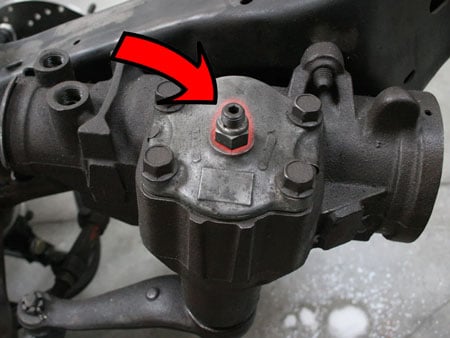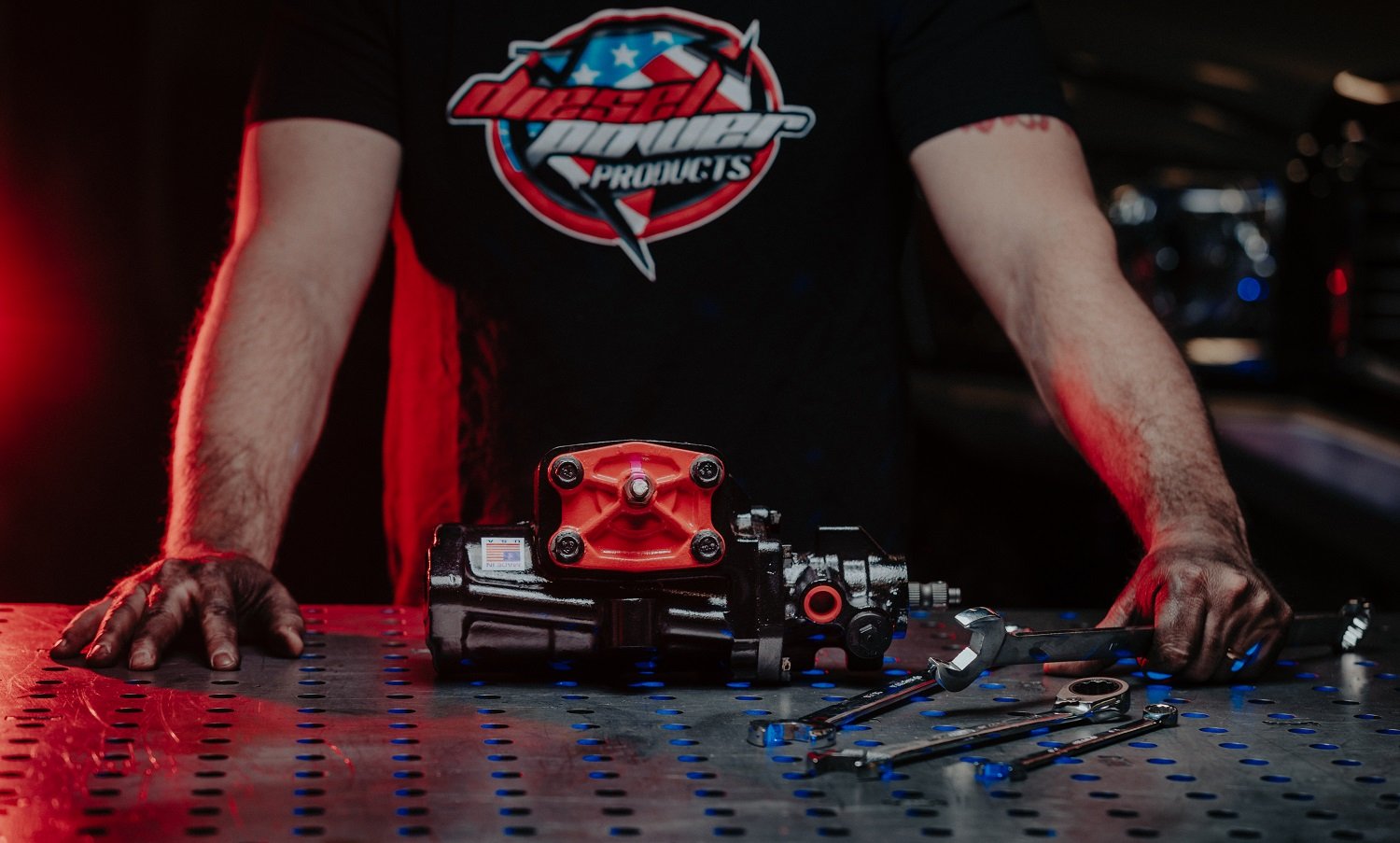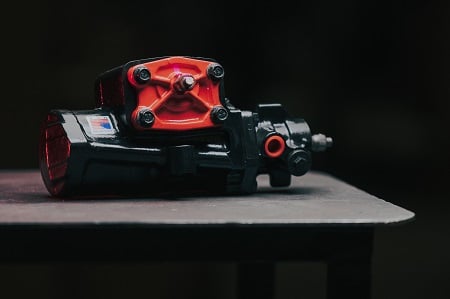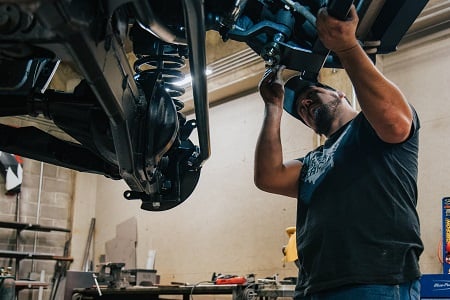If you have a diesel truck you want to keep on the road for many years and miles, you’ll have to invest a little time and effort into replacing wear items every now and again to make sure all the systems are up to snuff and the truck continues to drive like new. For the first 100,000 miles, most major mechanical systems on the truck will be covered by the manufacturer’s warranty but after that, you’re on your own. For owners who are handy with a wrench, this might not seem like such a big deal, but if you’re unfamiliar with a lot of mechanical systems, it might seem a little overwhelming owning an older truck and relying on what your mechanic tells you needs to be replaced. Arming yourself with mechanical knowledge and some basic tools can help you save money and ensure the job is done the right way the first time, so we’re kicking off a series that covers some basic diagnostic and repair info for systems that commonly wear out and need to be replaced on most diesel trucks. The first topic that we’re going to be covering is the steering gear box.
What Is a Steering Gear Box, And What Does It Do?
A steering gear box is the first (and arguably most important) mechanical part in the steering system after the steering wheel, and it serves several functions. First, it offers a gear reduction that transforms the three or four complete turns of the steering wheel into a little less than 90 degrees of rotation, second, it transforms that motion over a right angle to get it pointed under the chassis and toward the wheels, and third, it uses high pressure hydraulic fluid from the power steering pump to provide some assistance in turning the wheels, which is especially helpful on a heavy truck with a giant diesel engine sitting on top of the front wheels.
The input side of the steering box is connected to the steering shaft (and ultimately the steering wheel), and the output side is attached to a pitman arm, which in turn connects to the steering knuckles. This means all the energy required to steer the front wheels goes through the steering box, so to cope with the extreme forces, and as you can imagine, its normal for a gear box to wear out at some point.
Symptoms Of a Worn Steering Gear
There are several factors that can cause a steering gear box to wear out, and those include larger wheels and tires or lifted suspension, but even normal use can cause a steering box to fail with enough time. Every moving part has a certain number of cycles it can withstand before things like bearings or shafts wear out and fail, and your steering box is constantly moving as you drive. Every little correction or turn you make on the steering wheel means the box is moving and getting a little bit closer to its own demise. It’s hard to put a mileage estimate on the lifespan of a steering gear box, but usually a stock truck should be able to get deep into 100,000-mile territory before it needs to be replaced. When it does start to go, it won’t be a sudden failure or leave you stranded on the side of the road unable to drive, so you’ll have plenty of time to order replacement parts and make the repair, but how do you know for sure the steering box is worn out?
The most common symptom will slowly appear, and you might not even notice it at first, but some free play in the steering wheel is a dead giveaway the box is a little loose or worn. As you drive down a straight road, you might have to adjust the steering wheel back and forth slightly just to stay between the lines. When things get a little worse, you may notice hitching or a few spots where it’s harder to turn the steering wheel, and occasionally you can get some power steering fluid leaking from the box itself which is a sure sign of trouble brewing.
A few visual indicators can help verify the gearbox is worn out, and if you have a helper sit in the driver’s seat and wiggle the steering wheel back and forth a few inches, you should be able to see the steering shaft rotating slightly. If you notice the input shaft moves back and forth with no movement from the pitman arm, the play is coming from inside the steering box, and its gonna need attention. Additionally, you need to look for side to side play in the sector shaft (where the pitman arm attaches) since it should not move back and forth at all, only rotate.
Can You Adjust a Steering Box?

If the only free play you see in the steering box is rotational and the sector shaft stays centered in its housing, sometimes you can get a little more life out of it by adjusting the backlash. On the top of most gear boxes is a locknut and adjustment screw, and if you back off the locknut and turn the adjustment screw in by about an eighth of a turn, sometimes you can restore the original feel of the steering box. I’ve done this myself a few times with mixed results, so if an eighth to quarter turn of the adjuster screw has no impact, chances are the steering box is shot. It’s important to know if you over adjust the backlash, you can cause harder steering or even binding, so attempt this adjustment with caution. If you’re positive the steering box is worn, and the adjustments were unsuccessful, it’s time to order a new steering gear.
What Brand Should You Install?
Once you’ve determined it’s time to replace the steering gear box, you have another important decision to make, and that’s what brand of steering box to bolt back into your truck. Just about every auto parts store in the nation will carry steering boxes, but the majority of them are remanufactured by just one or two suppliers. While they do offer great selection and affordable pricing, the bad thing about choosing a mass-produced steering gear is the quality can be hit or miss. I have seen new steering gearboxes leak fluid right away, have more play in them than the old box you’re replacing, and sometimes they’ll arrive with damaged splines or threads making them impossible to install correctly, but the larger problem lies inside the box itself. There are several precision-fit parts which must be sized to the thousandth of an inch in order to make the box perform like new, and mass-rebuilders tend to focus on volume and production speed rather than precision, and that shows when you drive down the road. If you have absolutely no other option, a parts store reman box will get you out of a jam, but for most trucks, a better choice does exist.
If you want a steering box that will last a long time and deliver precise steering, they do cost a little more than a parts store replacement, but this is one of those situations where you get what you pay for. One great option is to go right to the source and install an OEM steering gear. Original equipment parts are usually made with tighter tolerances than a generic remanufactured unit, and they will deliver accurate steering, but you can also get the most up to date version of the steering box designed for your specific truck. Mopar for example, even offers a factory upgraded steering box for 2009 to 2012 Ram trucks using a box originally designed for a 2013 Ram 2500. This is built to the same high quality as the original Mopar steering box, but inside has been upgraded with a much larger and stronger sector shaft, which makes this upgrade ideal for drivers who have larger than stock off road tires.
If you want to improve your steering box to a level even higher than what the factory delivered, you need to check out Red-Head Steering Gears. They are technically remanufactured, and from the outside they look almost identical to your stock box, but inside they have been re-engineered to deliver the smoothest and tightest steering feel possible. They start the rebuilding process by inspecting the cores, and they throw out any part that is bent or broken, so only the best possible parts are used inside a Redhead box. After that, each housing gets torn down, thoroughly cleaned, and machined out to accept needle bearings instead of bushings for the shafts to pivot on, and finally, the icing on the cake is the ball bearings. Inside the steering gear, a worm and piston assembly is responsible for making the connection between the input and output shaft, and the assemblies are joined with ball bearings. Because this connection point is where any slop or play will come from, Red-Head installs custom sized ball bearings into each of their steering boxes so there will be zero play. While this process does take a little longer, the finished product is a steering box that is tighter than factory and lasts much longer as well.
Steps For Replacing a Steering Gear
Once you have the parts in hand, it’s time to tackle the job of replacing the steering gear box. It might seem like a huge task, but overall, the job isn’t too difficult and mainly requires basic hand tools. There are a few more specialty tools you might not have in your toolbox like a ball joint separator or torque wrench, but most auto parts stores will loan or rent those. In addition to the tools, you’ll need some power steering fluid (Dex 3 ATF works as well), a drain pan, a floor jack and stands, and some rags to clean up.
The first task is getting the truck up in the air and removing any skid plate or cover that might be in the way. Once you have access to the gear box, disconnect the pitman arm from the center link or drag link. The nut will likely have a cotter pin that needs to come out first, and as soon as you have the nut removed, use your pickle fork or tie rod removal tool to separate the taper of the pitman arm from the center link. This does take quite a bit of force, and sometimes striking the end of the pitman arm with a hammer is what it takes. If you have enough room on the chassis to remove the steering box and pitman arm together, I suggest you leave the two attached, as it will save you a lot of headaches. Next, you’ll want to take the seatbelt and run it through the steering wheel and buckle it in to prevent the steering wheel from freely spinning during the next step. On the topside, you’ll have to disconnect the steering shaft from the box which is held on with a single bolt, and the steering shaft usually is able to slide back a few inches out of the way. Next, you’ll have to remove the power steering lines from the gearbox, which means things are about to get messy, so prepare the drain pan and rags. Once the fluid has stopped dripping, there should be three or four bolts that attach the steering box to the frame, and with those out of the way, you can remove the steering box from underneath the truck. And by the way, and it’s pretty heavy, so don’t drop it on your head.
With the old box removed from the truck, it’s time to prepare the new gearbox to go back in. I would highly recommend you install a new pitman arm at this point, but you will probably need to remove the old pitman arm nut and washer for reuse on the new box. Double check that the new steering box is centered in its travel by turning the input shaft from end to end and counting the turns, and then install the new pitman arm onto the splines of the sector shaft. If you look closely, you’ll notice there are three or four splines that are larger than the rest, and these are known as blind splines. Their job is to ensure the pitman arm can only be installed in one direction, so if the box is centered and the pitman arm is pointing to the input shaft, you’re good to go. Do not use a hammer or press to drive the pitman arm onto the splines, and don’t use an impact gun to tighten the nut. Instead, use a torque wrench to slowly tighten the nut to its final torque, and this will seat the pitman arm onto the splines. Be sure to look up the torque spec for your application, but usually it’s somewhere between 180 and 250 ft.lbs.
Once the new box is prepared, the installation of the steering gear is the reverse of disassembly, but you will have to do a few extra steps to bleed all the air out of the system, so it runs smoothly and quietly. Once all the hoses have been connected, fill the reservoir with new power steering fluid, and with the front tires of the truck still in the air, slowly turn the steering wheel back and forth half a dozen times. Keep an eye on the fluid level as you do, and make sure the reservoir doesn’t go dry. This will push most of the air out of the lines and into the reservoir, so let the truck sit for 15-20 minutes to so any air bubbles escape, and then double check the fluid level, and start the truck. Be sure to quickly add fluid (if needed) as soon as the engine starts to prevent the pump from sucking in air, and slowly turn the steering wheel back and forth. I like to turn lock to lock once, return to center, and let the truck idle for a couple minutes, and repeat the process three or four times to push out any remaining air. When the bleeding process is done, the power steering pump should be quiet, and the wheels should turn smoothly with no hitching. If everything went well, it’s time to let the truck back down to the ground and take ‘er for the first test drive and enjoy your tighter than factory steering.
Back On the Road
While you could’ve dropped the truck off at a shop and let them handle the job, it’s never a bad idea to arm yourself with the knowledge of what it takes to diagnose and repair your own truck, and if you enjoy getting your hands dirty, you can even save yourself a pretty good chunk of change by doing it yourself. Gaining knowledge, saving money, and fixing your truck all at once is a pretty good deal if you ask me, and with the right steering box on your truck, it’ll be much more enjoyable to drive as well.




It was great to see someone write on this topic. Thanks for sharing your thoughts
Thank you for sharing how to diagnose and replace the steering gearbox in your post. I have learned that the steering box is very relevant to the steering pump. As you said, the mechanical part of the steering system after the steering wheel serves several functions. We like to hire a professional to help fix our Peterbilt Power Steering Pumps problem so that we can have our best position for our vehicle again.
Well I didn’t actually need to see this video since I have a little ’08 Ford Taurus x with a gas powered engine that doesn’t get nearly the miles a big rig does🙄🙄. My specialty? Falling down the rabbit hole 🤣.
But I tell you what, you explained that so well that even though I have a general idea of how things work and was just looking at the video just to fine tune I guess you can say, but I could see it unfolding and thank you for making that so simple:))
Wow Kichen Gadgets US offers new or latest online smart kitchen gadgets and tools in USA. If need best or useful appliances kitchen gadgets, today shopping us.
What if your going down the highway and you come to a curve and it feels like the steering lets loose for a second
I’ve got a 1993 Isuzu NPR 3.9LT turbo-diesel .The power steering gear box is leaking fluied
out of the top of the gear box where the steering shaft hooks up.